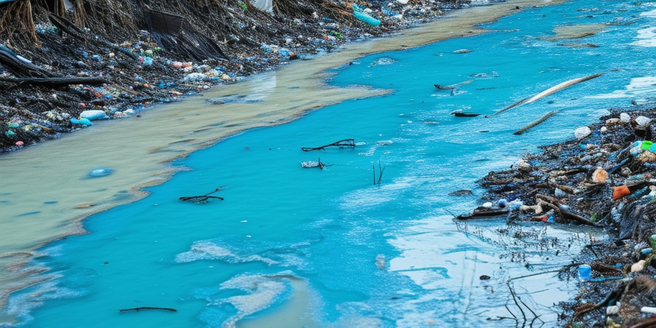
Understanding Environmental Contamination and Its Impact
Environmental contamination is an increasingly pressing issue. The disposal of hazardous waste in improper ways, such as dumping industrial waste into rivers, can lead to severe environmental and health consequences. Long-term exposure to these pollutants can cause an array of health issues, including respiratory problems and cancer. We must also note that this contamination is not limited to developing countries, but also affects developed nations. It’s an unfortunate fact that often, efforts to control and mitigate environmental contamination aren’t given the priority they deserve. Alarmingly, pollution levels are rising in many parts of the world, adding to the urgency of the issue. Moreover, it destroys habitat for plants and animals, disrupting the ecosystem balance. We must understand this as change is possible only when knowledge exists.
Key Elements to Consider in Environmental Contamination Lawsuits
When handling an environmental contamination lawsuit, crucial elements include: identifying the harmful pollutants, understanding their type, concentration, and dangerous effects; identifying responsible parties even amid the challenge of multiple contributors; and proving causation with a persuasive argument. Calculating quantifiable damages, conducting extensive environmental tests for irrefutable evidence, and backing the case with scientific evidence and expert testimonies are equally vital. To sum up, successfully managing such lawsuits requires careful attention to these key aspects, systematic environmental testing, solid scientific evidence, and insightful expert testimonies.
Types of Legal Remedies in Environmental Contamination Cases
The field of environmental law offers a range of legal remedies for handling environmental contamination cases, serving as compensatory measures for holding polluters accountable. Remedies such as injunctive relief, designed to stop the continuation of harmful activities, and monetary damages, compensating afflicted parties, are substantial. Additional remedies include remediation orders for the cleanup of pollutants and restoring the environment, along with punitive damages intended to deter future harmful actions rather than mere compensation. These available legal remedies, thus, hold the potential to prevent misconducts and adequately compensate victims of environmental calamities.
Practical Guide to Pursuing an Environmental Lawsuit
Confronting an environmental lawsuit necessitates crucial steps like a thorough investigation into the extent, causes, and potential consequences of the issue, while aiming to understand intricate environmental data and their complex effects. This phase requires diligent attention to detail, particularly in intricate environmental cases. Following this is the gathering of concrete evidence to substantify the claims made, which can be challenging due to the complex scientific data involved but is pivotal in providing credibility to the case. The gathered evidence, along with expert testimonies from professionals like environmental scientists, geologists, etc., proficient in the specifics of the case, helps build a stronger lawsuit.
The process of preparing for environmental litigation is laborious and involves numerous elements, making navigation through this tide of paperwork and legal jargon tough. In such situations, a legal counsel proficient in environmental law is invaluable as they possess the skills to interpret and apply the law effectively, and competently navigate the legal system. They serve as a significant representative, advocating for your case and handling negotiations on your behalf which leads to a fair resolution, ensuring justice is served and the environment is preserved or remediated effectively.
Case Study: Successful Environmental Contamination Lawsuits
The magnitude of successful environmental lawsuits is epitomized by the historic litigation against British Petroleum (BP) for the Deepwater Horizon oil spill, resulting from their gross negligence. The subsequent court proceedings played out in the federal court where, based on the evidence and arguments, the judges sided with the plaintiffs, declaring that BP’s lack of safety measures and neglect of essential environmental protocols led to the disaster. The verdict necessitated BP to pay unprecedented economic and environmental damages, amounting to billions, surpassing most previous environmental law civil penalties. This consequential lawsuit sent a powerful message to corporations about the legal repercussions of environmentally non-compliant actions, serving as a potent precedent and strong deterrent, thereby significantly influencing the field of environmental law.
